The Timeless Appeal of the Chinese Yixing Zisha Teapot
Welcome to Learning Chinese! In today’s article, we are going to explore the timeless appeal of Chinese Yixing Zisha teapot. Deeply loved by tea lovers, this kind of clay teapot is still popular today. Find out more about the multiple appeals of Zisha teapot—it’s a treasure heirloom and a handy tool. Get lost in a fusion of history and tradition; let the magic of Zisha teapot bring you one step closer on your tea appreciation journey.
The Yixing Zisha teapot comes with endless stories about tea, art, health, culture, tradition, science and history, all wrapped-up into one single teapot. Each topic in this pillar page on the ten things to know about the Yixing Zisha teapot can unlock the core meaning of its intrinsic value behind Yixing teapot. Whether you are an experienced tea master, a tea lover for collection of fine art, or simply looking for a special moment of “zen time”, Yixing teapot has a little something for everyone.
The ten facets of the Yixing Zisha teapot
We have grouped our exploration of the Yixing Zisha teapot around ten special themes, in order to better reflect the variegated character and appeal of these delightful teapots. Below are the ten things to know about the Yixing Zisha teapot, each linked to a separate pillar page for further detail about what makes it so special.
1. Tea Master: Precision and perfection
For the tea master, a teapot a tea vessel is much more than just something to brew tea in. In the tea master world Yixing Zisha teapots are celebrated for the following reasons:
Perfect heat insulation: The porous structure of Zisha clay provides excellent insulation, which means your water temperature will be more stable and won’t fluctuate too much. This is incredibly important for premium tea, which can only be brewed well at a certain temperature. These teapots are also highly popular for brewing Puerh, Oolongs, and black teas, which in general do require higher temperatures for you to extract all the flavors.
Better tea liquor: Because the best Yixing teapots aren’t glazed on the inside, your teapot will trap a little tea oils with each brew. Over time, this so called “memory” will improve the taste, scent, and texture of the tea the tea. No other material will be able to mimic this. Thus, many tea masters dedicate 1 teapot for 1 kind of tea, in order to avoid the memory to be tainted.
Controlled pouring: Because gravity can pull your water down faster than you can pour, the best Yixing teapots are all crafted to control this factor and design their spouts such that you can pour precisely without a drip. The pot should feel balanced in your hand, it allows control and adds mastery to your tea brewing skills. This is especially important for those wish to perform the Gongfu tea ceremony. Every drop of tea liquor is precious.
Teapot interacts with tea: There are many minerals are found in authentic Zisha clay, and this specific properties are said to have a positive effect when brewing tea. While still debatable, many tea drinkers say that Yixing teapots can make your tea liquor taste softer and round of any bad sharp notes.
A tea master knows that the teapot is more than just a tool, but it plays an important role in making tea. And a Yixing Zisha pot is, more often than not, their best companion.
2. With Artistic Finish: Beauty in Clay
While traditional Yixing Zisha teapots are typically known for their unglazed, natural clay surfaces, the “Artistic Glaze” for Zisha mostly refers to the great variety of natural colors resulted from the various types of Zisha clay (such as Zini, Hongni, Ducaoni, Lüni, Banshanlü), and the faint sheens or patina formed on the surface thanks to the particular firing temperatures and skills, or just the craftsman’s polishing techniques. A real Yixing teapot should have no glaze on the inner surface, as glazing would seal the pores. Other common techniques for decoration include:
Natural Clay Colors: Yixing clay comes in a wide range of colors and shades, from deep purples and browns (Zini) to bright reds and oranges (Hongni), and even rare greens and beiges.
Surface Textures: From smooth surfaces to rough, sand-like textures, the tactile sensations of a Yixing teapot add to its allure.
Hand-Carved Decorations: Artists often carve intricate designs, calligraphy, or images into the teapot’s surface, creating custom, personalized masterpieces. Designs often include traditional Chinese themes such as flowers, birds, landscapes, and famous quotes or poems.
Unique Shapes: Yixing teapots are known for their varied and unique shapes, ranging from classic forms to whimsical or abstract designs. Several have even been inspired by the natural world, mimicing the appearance of bamboo, melons, animals, and more.
The Patina of Time: Over time, a Yixing teapot develops its own patina, a luminous, soft sheen on its surface that adds to its beauty and complexity. The famous “Yixing glow” is a sign of a pot’s long and storied history with tea.
These “artistic finishes” are embedded in the clay itself and the potter’s technique, not a pristine layer of applied vitreous glaze. They have developed in such a way as to designate each teapot as a work of art in itself.
3. For Zen Moments: Brewing Serenity
Brewing tea with a Yixing Zisha teapot is an intensely meditative experience. You can reach a sublime state of calm and presence—zen moments in the midst of your usual busyness.
Harmonious Ritual: The mindful steps of warming the pot, measuring the tea leaves, pouring the water, and preparing the tea create a sense of calm.
Connection: Zisha clay is sourced directly from the earth. Yixing provides a tangible connection to nature. The feel of warm clay in your hands, the fragrance of the brewing tea, the gentle sound of the water… all contribute to a harmonious connection that roots you in the present moment.
Focus: The Gongfu Cha tea ceremony, often conducted with Yixing teapots, requires precision and a dance to each step, amounting to a moving meditation.
Gratitude for Imperfection: A core tenet of Zen philosophy is Wabi-Sabi: A celebration of imperfection and impermanence. A time-loved Yixing pot, carrying its patina and marks of use, embodies the idea.
To play with pots is to close oneself within a space of tea, to engage in a beautiful silence and a mindless focus, to indulge in oneself and to recover…
4. With Ergonomic Design: Harmony in Hand
To the tea lover, the well-matched Yixing Zisha teapot is a Yixing Zisha teapot that matches the eyes and seduces the hands. In light of this, the ergonomic design of a great Yixing Zisha teapot is the reflection of the potter’s rich sense of touch and understanding of the mechanics of pitching and pouring.
Weight & Balance: Potters keep a keen sense of the intricacy and distribution of weight, designing the Yixing Zisha teapots to feel easy but balanced when held in hand and brimming with tea.
Handle: Secure, natural and comfortable to grip, Yixing Zisha teapots that make for easy pouring. Handles range in form and shape, from simple loops to rigged, flora shaped wares, but functionality is a priority.
Lid Fit and Airflow: Many lids have a small vent hole that, when sealed with the finger, stops the flow of water from the spout. Having a balance between a snug fit and proper airflow is important to avoid leakage and have a smooth pour.
Spout: The “lips” and inner structure of the spout is engineered for a clean, dripless pour. The length and curvature of the spout influences the pour “stroke”.
Knob (Button): Besides for decorative purposes, the knob on the lid should make it easy to lift the lid comfortably and safely, even if hot.
It’s ergonomic design gives you a pleasant, tactile experience when brewing.
5. For tea tasting: Presenting the tea at its best
One advantage of Yixing Zisha teapots that is appreciated by professional tea tasters and committed enthusiasts is that they present tea well in its “original form”, or even enhance some of its subtler aspects.
Neutral (some clays) or enhancing: While some Zisha clays are mostly neutral in their influence, some are believed enhance subtle flavors, diminish astringency and bring out the natural sweetness in a tea.
Porous and aromatic: The porous nature of the clay allows a teapot to “breathe. This can contribute to the complexity of the aromas. As mentioned above, seasoning the pot with a particular type of tea will gradually strengthen the characteristics of that tea.
Heat retention: When tasting teas, consistency in temperature is important for comparisons. Yixing’s heat retention is a good quality for maintaining temperature stability throughout consecutive steepings.
Less is more: Many Yixing teapots are small. They are geared for the Gongfu style of brewing, involving multiple short infusions at a time. The Gongfu style suits the task of tasting, particularly the development in flavor and aroma of a particular tea, through multiple steepings.
Whether for critical evaluation or for simply enjoying the best your tea leaves have to offer, the Yixing teapot can be an indispensable tool.
6. With Natural Clay: The Soul of Yixing
Essential to every Yixing teapot is the Zisha clay itself. This unique “purple sand” (a literal translation of Zisha) is available only in the Yixing region, and has a few notable properties:
Rich Mineral Content: Zisha clay is rich in iron oxide, quartz, kaolinite, mica, and a handful of other minerals. These affect its color, texture, and its legendary interaction with tea.
Unique Porosity: After firing, the Zisha clay takes on a unique double-porosity structure. This structure allows the teapot to breathe, and it is what accounts for its heat retention and the ability to absorb the essence of the tea over time.
Malleability and Strength: The clay is highly plastic, so that even the finest details can be hand-built by the artisan. After firing at high temperatures (1100-1200°C), the clay becomes very strong and durable.
Zini (紫泥): The most common purple clay, Zini fires to a range of browns and purples.
Hongni (红泥): A red clay highly concentrated in iron, Hongni fires to anything from vibrant reds to deep oranges, and are often favored for Oolongs.
Lüni (绿泥): A rarer green clay that fires to a beige or yellowish color, it is sometimes used for highlight work or in clay blends.
Duan Ni (段泥) / Benshan Lüni (本山绿泥): A beige or light-colored clay that is prized for its appearance, and sometimes has fine speckled dots.
Zhuni (朱泥): A particular kind of Hongni, Zhuni is fine and dense, and shrinks by a remarkable proportion when fired, lending it a particularly high-pitched sound when tapped.
What sets a teapot apart in quality and price is the zisha clay used, and its authenticity.
7. Mindful brewing
In much the same way that we can create a Zen moment, using a Yixing zisha teapot can be a mindful way to prepare tea and turn a simple daily act into one of presence and deep experience.
It is sensory: Tune into the heat of the pot in your hand, the crystal clink of the cup, the shape and colour of the liquor, the uncurling of the leaves, and the aroma that spreads and shifts, finishing in your mouth and nose as well as in your cup.
It slows you down: Brewing tea in this accomplish fashion is not an instant experience. As with other methods, right from the start – from measuring the leaves to patiently waiting for that gap between infusions, there is a delicious pause that invites you to stop and savour.
It is intentional: Preparing tea with a yixing clay pot can be done as an intentional act of nurturing service to yourself or others – a sacred pause from the whirl of day-to-day life or even a moment of connection.
Observing change: There is a transformation as you reach that space between sips, finishing with you and the resting leaves waiting in their yixing clay pot to keep from you. Why not try watching the leaves open to reveal their gifts and be opened by them in return?
This mindful practice may help reduce stress and invite a sense of gratitude for the simple beauty of an everyday ritual.
8. So much more than meets the eye
Every Yixing Zisha teapot stands as a chapter in history, reverberating with the nuances of centuries-old traditions, craftsmanship, and cultural significance.
Ancient Origins: The production of teapots in Yixing began during the Song Dynasty (960-1279 AD). Zisha teapots became renowned during the Ming Dynasty (1368-1644 AD).
Generations of Craftspeople: The knowledge and skills required to create Yixing teapots have been handed down through many generations of master potters. Historical and contemporary potters who have attained fame wield significant influence, and their works can command high prices.
Cultural Significance: Yixing teapots are intertwined with Chinese tea culture, literati traditions, and artistic expression. Many teapots are imbued with cultural symbolism, incorporating design elements or calligraphy that reference philosophical ideas or natural beauty.
Changes in Style: The shapes, decorative elements, and styles of Yixing teapots have evolved over centuries, mirroring shifts in aesthetic sensibilities and tea drinking practices, while preserving the core principles of craftsmanship.
Owning a Yixing Zisha teapot evokes a sense of owning a living history tied to cultural legacy.
9. For Limited Editions: Arts’ Crafts Treasures
Yixing Zisha teapots are highly sought after by collectors all over the world. Many of them regard these earthy teapots not only as teaware but also as artworks of great collectible value.
Master Artisan Works: Teapots created by famous masters, both contemporary and from the past, are especially collectible. Having the signature or seal of the artist enhances their authenticity and value.
Rare Clays and Designs: Teapots made from uncommon Zisha clays or those with unique, innovative, or historically important designs can be highly collectible.
Historical Significance: Antique Yixing teapots can be windows to the past and may hold significant cultural importance.
Investment Potential: High-quality Yixing teapots, like fine art, can appreciate in value over time, especially those with strong provenance or created by wellknown artists.
Limited production: Real hand-made Yixing teapots are not mass-produced. The expertise and time required to craft a single pot means that there is a limited supply of these items, especially those in the top tier.
The activity of collecting Yixing teapots is an education in and an enjoyment of a special art form.
10. With Refined Elegance: Aesthetics in Simplicity
The traditional beauty of Yixing Zisha teapots tends to value understated elegance, and a balance of form and function.
Classic Shapes: A few classic shapes (such as Shi Piao; 石瓢, stone dipper), Xi Shi (西施, name of a famous beauty), Fang Gu (仿古, imitation of ancient drum) and Long Dan (龙蛋, dragon egg), honed through hundreds of years of refinement, continue to be some of the most popular teapots in existence (and are also popular for their utility).
Subtlety of Detail: The elegance of a teapot is often manifested in the subtlest of curves, in the precision of the lid fit, in the smoothness of the clay, and the poise of the placement of any adornments.
Harmony of Proportions: Master craftsmen have an instinct for harmony of proportion and can create a teapot that is beautiful to behold at any angle.
“Qi Yun” (气韵) – Spirit Resonance: The best Yixing teapots are said to have “Qi Yun”, an elusive quality that can be thought of as a “breath of life” or an “essential spirit” that resonates with the beholder.
The pure, quiet elegance of a Yixing Zisha teapot renders what might otherwise be considered merely utilitarian into something to be contemplated upon and enjoyed aesthetically on a day to day basis.
Expand your application scenario
Of course, Yixing Zisha teapots stem from personal tea drinking, and even in such cases, they address specific needs and fit into particular scene scenarios.
Which industries are applicable to?
Tea Houses & Specialty Cafes: To offer premium tea experiences and educate customers on traditional brewing methods.
Fine Dining Restaurants: As part of a sophisticated beverage program, to elevate the tea service.
Hospitality (Luxury Hotels): As an upscale in-room amenity or a feature in high-end lounges.
Wellness & Spas: To incorporate mindful tea rituals as part of relaxation and well-being programs.
Art Galleries & Museums: As works of art on display or as part of cultural exhibitions.
Collectors & Auction Houses: In the trade and appreciation of rare and antique teapots.
Corporate Gifting: As a unique and prestigious gift for valued clients or partners.
What common problems can be solved?
Tea Flavor & Aroma Improvement: Yixing teapots are celebrated for their ability to soften tannins, achieve a round flavour profile, and enhance the aroma and taste of the tea. They optimise the overall profile of Puerh tea, Oolong tea and black tea.
Maintaining Proper Brewing Temperature: Yixing teapots are unmatched when it comes to retaining heat, so water stays at the right temperature for a longer period of time, which is essential to properly extract tea.
Bringing Mindfulness to the Tea Ritual: Yixing teapots turn the act of preparing tea into an aesthetically pleasing ritual.
Tea Quality Preservation: A seasoned Yixing pot preserves and improves the quality of the tea kept in it, provided that the pot is used steadily and consistently for one type of tea only.
Cultural Connection: Yixing teapots are a tangible product of Chinese tea culture and history.
Unique Artistic Expression: They are beautiful, hand-crafted products reflecting the individuality and flair of the maker.
Mastering Your Choice: Selection & Comparison Suggestions
Picking your first (or next) Yixing Zisha teapot can be an exciting decision to make. Here’s how to think through your purchase:
| Feature |
Yixing Zisha Teapot |
Porcelain Teapot |
Glass Teapot |
| Material |
Porous clay |
Non-porous, glazed ceramic |
Non-porous glass |
| Heat Retention |
Excellent |
Good |
Fair |
| Seasoning |
Yes, absorbs tea oils |
No, easy to clean |
No, easy to clean |
| Flavor Impact |
Enhances specific teas |
Neutral, true to leaf |
Neutral, true to leaf |
| Best For |
Puerh, Oolong, Black Tea |
Green, White, Scented Teas |
All teas (visual appeal) |
| Durability |
Can be fragile if dropped |
Can chip or break |
Can break easily |
| Aesthetics |
Rustic, natural, artistic |
Elegant, often decorated |
Clear, modern |
Authentic Clay is the most important consideration. Buy from a known supplier. Real Zisha clay has a specific feel and look.
Clay Type. Which teas do you drink the most? Zini are popular all-rounders. Hongni/Zhuni tend to be favored for Oolongs or Puerhs. These clays are fired to higher temperatures and are harder/dense clays.
Size. Choose your teapot size according to your needs – personal brewing or with friends. Gongfu teapots are smaller – 80-250ml.
Lid Fit: Should fit snugly with minimal free play / wiggling of the lid. Water should pour without drips from the lid.
Spout: Clear, smooth conduit without blockage. No drips from the spout after pouring.
Handle: Comfortable, tight (not loose, wiggly) handle grip.
Purpose: Are you looking for a daily personal brewer, a special pot for a certain type of tea, or a collectible?
Budget: Prices of Yixing Zisha teapots vary tremendously – from daily use pots in the low two digits to masterworks in the thousands. Fix your budget but be careful of teapots that are unusually cheap – they may not be true Zisha.
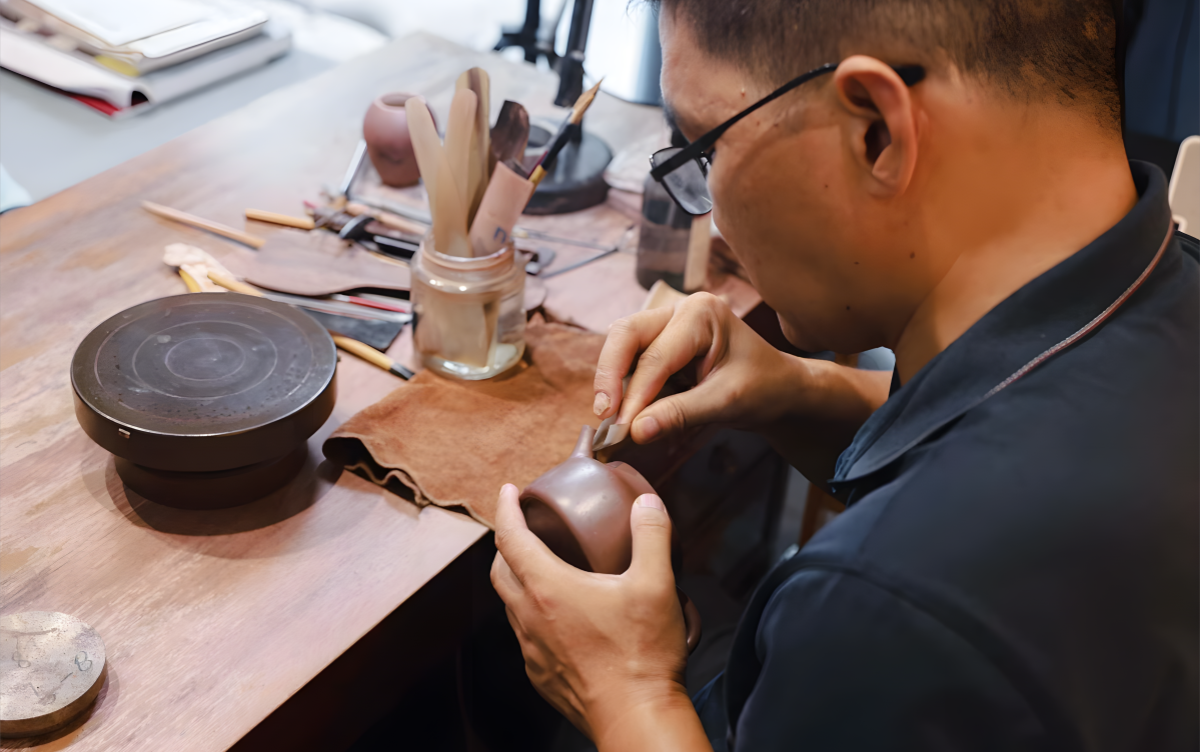
Your Questions Answered: FAQ
Here are answers to some common questions about Yixing Zisha teapots:
Thoroughly rinse a new pot in warm water (no soap!) Some people then soak the pot in boiling water for 30-60 minutes. Another traditional option is to use a strong batch of the tea you will be using with the pot, and steep the pot for a few hours or overnight and rinse. The idea is to remove any clay dust and begin the seasoning process.
Never use soap or detergent to wash the clay pot, as both are absorbed by the clay, harming the pot. Empty leaf as soon as it is done being smoked. Rinse thoroughly in hot water. Gently wipe off the exterior of the tea pot with a soft tea towel. Leave to air dry completely with the lid off to prevent mildew from forming.
Yes, they are ceramic and will break is dropped or mistreated. However, well fired Zisha clay is pretty tough. Handle with care.[/fusion_Toggle]
The peculiarities that the genuine material allows, the degree of hand-craft work that it entails, the time it takes to make, the intellect involved (typically master potters) and the cultural heritage they carry. Depending on what tea the pot is for you might want to use a taller pot (e.g. some high aroma teas benefit from a tall pot) or a wider/flatter pot (e.g. some Oolongs benefit from a pot that allows the leaves to expand). – Aesthetics. – Hand feel and personal preference. – If you are just getting started, buy a classic all purpose shape.
It all depends on the seller. Good vendors will provide some guarantee they are genuine and that the craftsmanship is good when they arrive. Because of what they are, and that they are prone to use damage, it is rare useful protection.[/fusion_Toggle]
Traditionally, Puerh teas, Oolong teas (especially ones more towards the darker side of the spectrum, that is a Yancha or Dancong), or black teas (Hong Cha) are typically preferred. The robust, full flavours and aromas are accentuated by the clay. It is generally advisable to only use one particular tea per teapot, or at the very least to only use similar smelling teas.
It’s not recommended if you want to get the full benefits of seasoning. The pot absorbs oils and aromas, and brewing one tea one day (a smoky Puerh) and another tea the next day (a floral Oolong) will muddle flavors. If you’d like to break the rule, at least make sure that the teas have similar profiles.
True Stories: Some Real Stories & Customer Reviews
The Joy of Collection: “I acquired my first Yixing pot, a basic Zini, some years ago when I first started my Yixing collecting. Today my collection has over 20 pots and each pot has its own unique story with it, the potter who made them, the type of clay and of course, the numerous tea sessions that I’ve had with my friends. My favourite pot, is a Republican era Hongni pot which makes the best Wuyi Oolong.” – Mr.Lee, Singapore.
A Tea House’s Secret Weapon: “Many of our patrons enjoy the taste of our aged Puerh tea especially. Our secret is that we only brew the tea with our Yixing Zisha pots that have been well “seasoned” with each pot dedicated to a specific type of Puerh. It makes all the difference” – Owner, “The Tranquil Leaf” Tea House.
Morning Mindfulness: “Each morning, I take a moment to make a cup of Tie Guan Yin in my small Duan Ni Yixing pot. There is something about the act of making that cup of tea that grounds me as I limber up to face the day. The warmth of the pot, the fragrance… It’s my morning moment of mindfulness.” – Sarah K., Wellness Instructor
A Surprise Gift: “My Yixing teapot was given to me as a gift and I have to say, I was quite intimidated by it at first. After learning how to use and prepare tea with it, I now have a new found interest in tea and am amazed by how much better my favourite Da Hong Pao tea now tastes from my little clay pot!” – David B., New Convert

Timeless Treasure: The Legacy of Yixing
The Chinese Yixing Zisha teapot is not just a brewing vessel. It is a work of art, a cultural icon, a testament to passion and respect for tea, and more. Whether you are trying to perfect your tea, enjoy the art, or find peace and relaxation in your life, a Zisha teapot is sure to bring delight and discovery.
We encourage you to browse our curated selection and choose the Yixing Zisha teapot that speaks to you. Each piece is a tribute to a living heritage, ready to be interlaced with your tea journey.


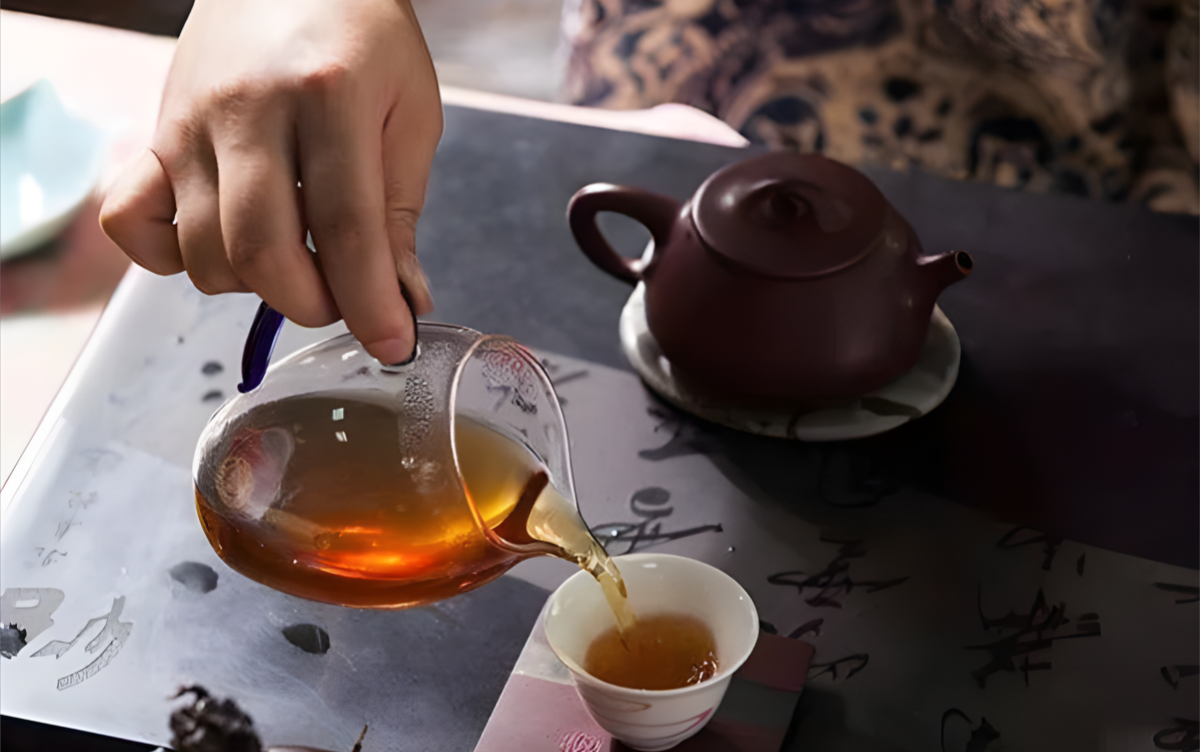


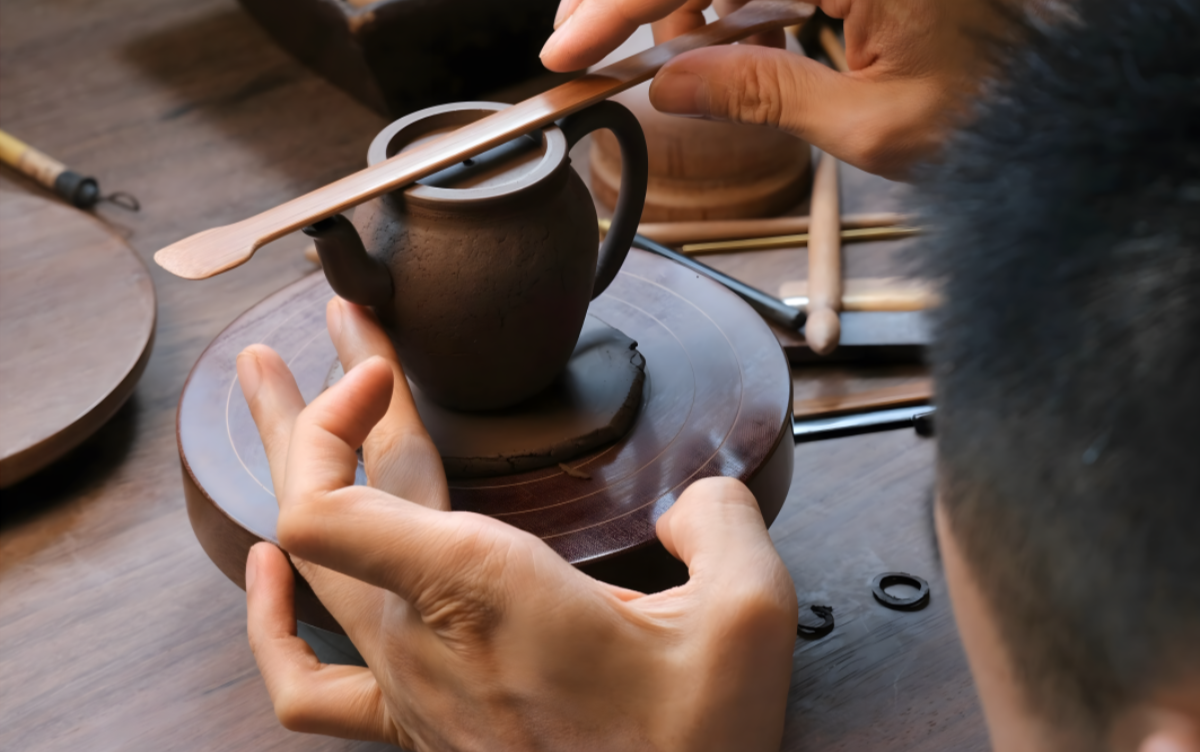




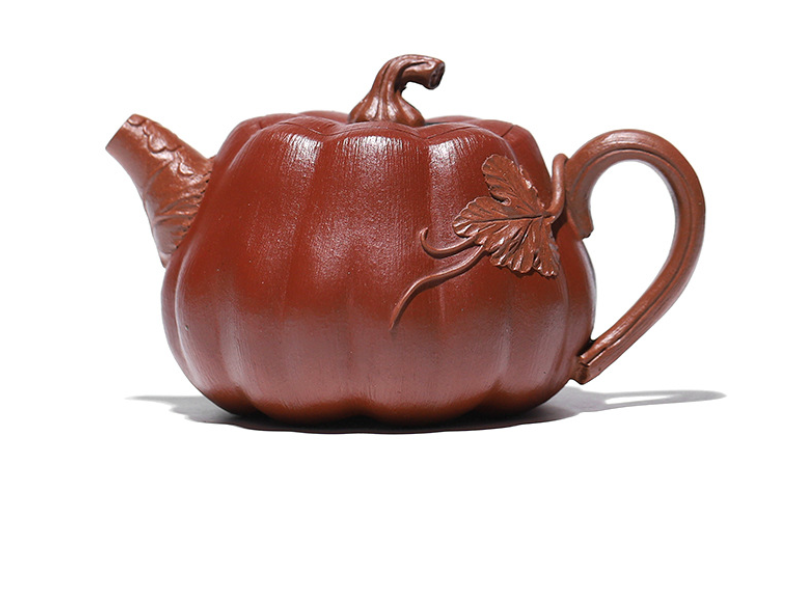










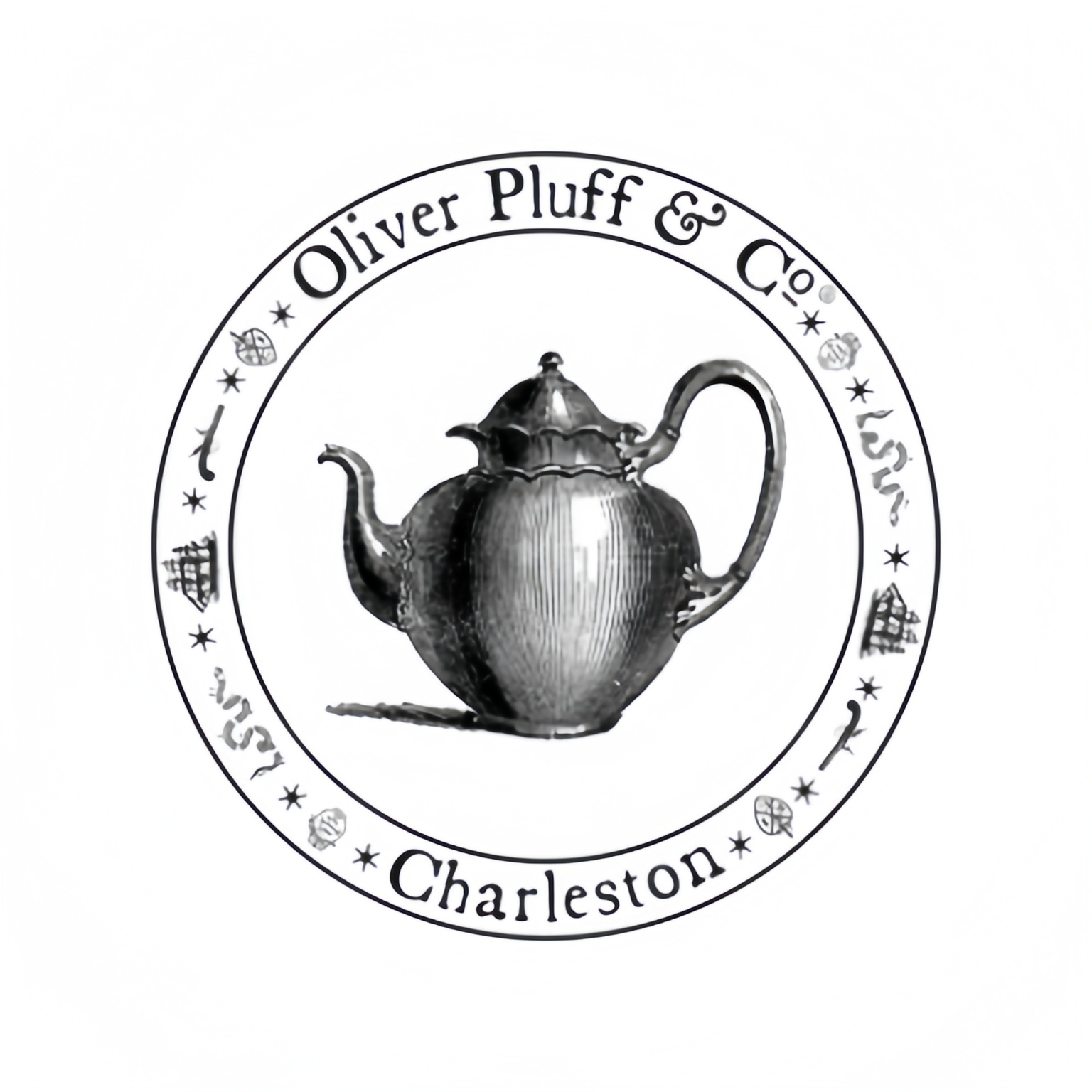





Emily –
It feels well made. No leaks and heats up fast on my stove.
Travis Scott –
After using it a few times, the taste is unbeatable, My new teapot.
Mei Lin –
It’s the perfect size for 1-2 people. It’s easy to clean and just keeps improving with each usage.
Travis Scott –
A little expensive but worth it, quality speaks for itself.
Giovanni Rossi –
The lid fits well and there’s no dripping from the spout, pouring cups for company is now a cinch.
Mei Lin –
I gifted it and my friend card and said it’s the nicest tea pot they’ve ever had.